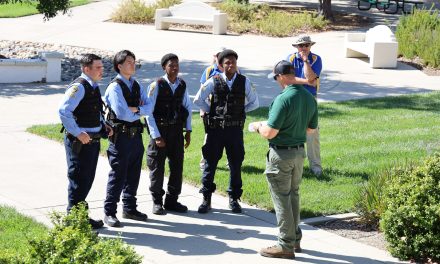Education has been adapting to the challenges of distance learning and return to in-person learning. One student, Brooklyn Brown, shares some experiences from the past year in Leadership magazine.
“Over the last few months, like everyone else in the world, I have been living through tons of new experiences. I have started virtual schooling, which is a challenge in itself. What a way to start 7th grade! At first, I struggled with handling new assignments every day. I had to memorize the information given in lessons, and there were a lot of lessons to complete. It was a little overwhelming, and my grades were not gratifying.”
Brooklyn’s comments are a similar narrative heard across the education community and present us with an opportunity to examine our practices as we exit COVID conditions to better leverage technology resources moving forward. What has history taught us? The 17th century did not require a formal education because most children assisted the family at home or on the farm. Education was a luxury reserved for a select few teaching how to read the bible and remain aligned with puritan morals. Harvard was established as the first college in 1636, with the first academy for girls opening in 1787.
During the 19th century, education shifted from a religious-based system to a standard, state-sponsored system. The first U.S. public school opened in 1821, and President Andrew Johnson signed legislation creating the first Department of Education in 1867. Over the years, the office remained relatively small, operating under different titles and housed in various agencies, including the U.S. Department of the Interior and the former U.S. Department of Health Education and Welfare (now Health and Human Services).
Political and social changes during the 1950s increased federal funding for education. The Soviet Union’s Sputnik in 1957 spurred nationwide concern that led to increased aid for science education programs, today’s Science Technology Engineering and Mathematics (STEM). President Lyndon Johnson’s “War on Poverty” created several programs designed to improve education.
Education expansion continued in the 1970s with national efforts to help racial minorities, women, people with disabilities, and non-English speaking students gain equal access to education. In October 1979, Congress passed the Department of Education Organization Act (Public Law 96-88) which formalized the Department of Education under President Carter. Technological changes over the years presented challenges and opportunities for education, much like those we have experienced because of COVID.
My father showed me one of the first portable calculators in 1971. This four-function marvel of technology was a Busicom LE-120 “Handy” featuring a 12-digit red LED display and retailing for $395, which is about $2,500 today adjusted for inflation. Questions were raised in education circles at the time about how this new tool would change mathematics instruction. During the 1980s, computer-aided teaching was emerging in both K-12 and higher education classrooms.
Little did I imagine as a new teacher making use of an Apple II computer lab that we would spend an entire year applying technology-based learning platforms because of a pandemic. What lessons have we learned in response to Brooklyn’s struggles and requests that education addresses the needs of today’s youth?
“There may be an opportunity to reimagine what schools will look like,” Education Secretary Miguel Cardona told The Washington Post. “It’s always important we continue to think about how to evolve schooling, so the kids get the most out of it.” Few education stakeholders suggest that distance education is for everyone. But many are examining how distance or virtual platforms can meet the educational needs of students with jobs, certain medical conditions, or those who prefer virtual learning. The Rand Corporation, a nonprofit research organization, reports that 2 in 10 school systems plan to adopt virtual platforms post-COVID.
Considering the coronavirus rescue package signed into law by President Biden, schools have an opportunity and challenge to proactively spend federal funding on evidence-based interventions to address learning loss. This pandemic presents us with an opportunity and challenge to adapt, innovate, learn, and improve how we provide for the education of our future. What technological lessons can we apply to serve the public better? We observed the entire community meet the challenge of COVID, and I have confidence that this human can-do spirit will continue as we move forward together into a brighter future. It is an honor to serve as your county superintendent of schools.







